
Pastries, including quick breads such as pancakes, need something to help them rise during cooking. Called leavening agents, substances such as baking powder and baking soda create chemical reactions that cause the batter and dough to expand. Even though pancakes are cooked on a griddle rather than baked, baking powder works the same way by making them light and fluffy.
Leavening Agents
Common leavening agents include yeast, used in raised breads; baking soda; and baking powder. Yeast is an active organism that develops slowly in a warm moist environment. Baking powder and baking soda are chemically based substances that produce carbon dioxide in a wet medium, such as batter or dough. Baking soda needs an acid to function as a leavening agent, while baking powder already contains baking soda, along with cream of tartar, an acid, and cornstarch. Baking powder is the leavening agent of choice for pancakes, because the batter contains no acidic component that would activate plain baking soda.
Pancakes
Most pancake recipes are a combination of flour; a sweetener, such as sugar or honey; eggs; milk; and shortening, usually oil. They also typically include baking powder and a little salt to enhance the other flavors. Success depends on exact measurements, as too much flour makes pancakes too thick, dense and dry, while not enough makes the batter too runny. Eggs act as a binder to hold the other ingredients together, while milk provides the necessary moisture. Oil helps to cook the pancakes evenly from the inside.
Method
Follow recipe instructions carefully, and use a wire whisk or fork to blend ingredients together just enough to eliminate most lumps. Batter can be kept in the refrigerator overnight and stirred again in the morning. If it has thickened, whisk in a few drops of milk to make it pourable. Pancakes are best cooked quickly on a hot oiled griddle set at about 350 to 375 degrees Fahrenheit. A drop of water should sizzle when it hits the surface of the pan or griddle. Pour or ladle out the batter in circles that measure roughly five inches in diameter and lift the edges of the pancakes with a spatula to check for doneness when air bubbles begin appearing across the top. Well-done pancakes should be a light golden-brown on both sides, which takes a four to five minutes.
Considerations
Omitting the baking powder results in a batter that rises only slightly, but magically produces yet another confection -- the crepe. The same ingredients pancakes are also used to make crepes, with the exception of baking powder. Amounts of each ingredient may vary, but they produce a thinner more compact and chewier product that clearly reflects what happens when a leavening substance is omitted. Leaving baking powder out of the mix is what gives crepes their thin flexible consistency, making them ideal as breakfast or dessert choices. Roll them around a filling or layer them with fruit or a cream filling.
Related Articles

Does It Matter if I Substitute Baking ...
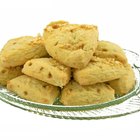
What Is the Difference Between Scones & ...
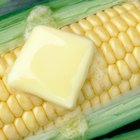
Common Food Emulsifiers

How to Make Nice Fluffy Pancakes With ...
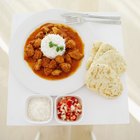
What Is Indian Flat Bread Called?

Rolled Oats vs. Quick Oats for Apple ...

What to Do With Pizza Dough When You're ...

Shortbread Cookie Recipe

What Is the Difference Between Puff ...

How to Use Bisquick Shake 'N Pour

What Is the Difference Between a Bagel ...
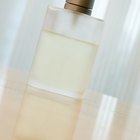
How to Make Dry Oil
How to Make Homemade Pancakes Without ...

What Kind of Oil Do You Use in Brownie ...
Baking Soda or Baking Powder to Make a ...

Can You Make Dumplings With Cornstarch?
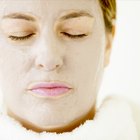
How to Make a Thermoherb Mask at Home
How to Make Homemade Brownies With ...

Can I Coat Chicken Wings in Cornstarch ...
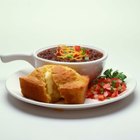
How to Make Cornbread in a Cast-Iron ...
References
Writer Bio
Rachel Lovejoy has been writing professionally since 1990 and currently writes a weekly column entitled "From the Urban Wilderness" for the Journal Tribune in Biddeford, Maine, as well as short novellas for Amazon Kindle. Lovejoy graduated from the University of Southern Maine in 1996 with a Bachelor of Arts in English.
Photo Credits
George Doyle/Stockbyte/Getty Images